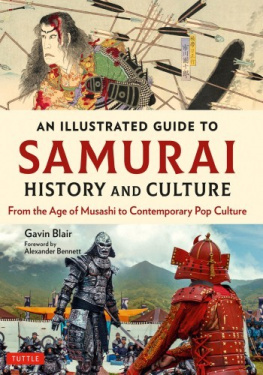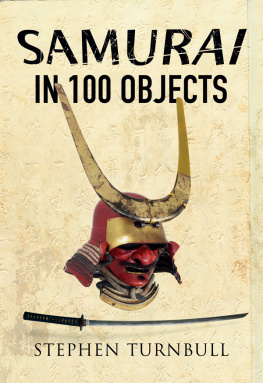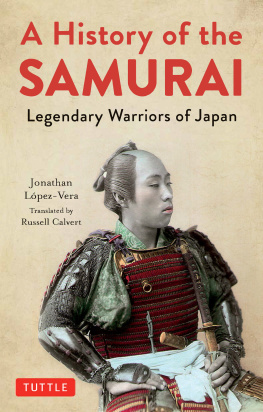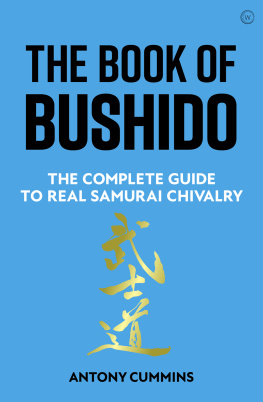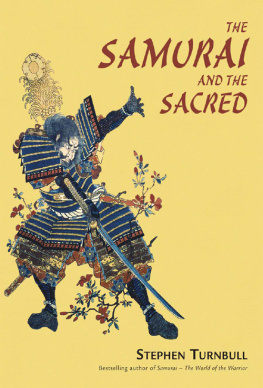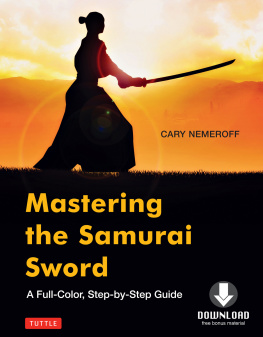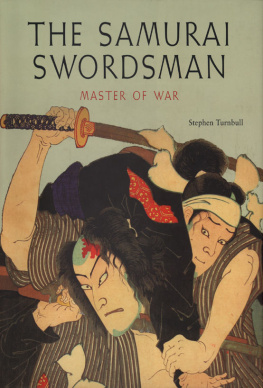Gavin Blair - An Illustrated Guide to Samurai History and Culture: From the Age of Musashi to Contemporary Pop Culture
Here you can read online Gavin Blair - An Illustrated Guide to Samurai History and Culture: From the Age of Musashi to Contemporary Pop Culture full text of the book (entire story) in english for free. Download pdf and epub, get meaning, cover and reviews about this ebook. year: 2022, publisher: Tuttle Publishing, genre: Non-fiction. Description of the work, (preface) as well as reviews are available. Best literature library LitArk.com created for fans of good reading and offers a wide selection of genres:
Romance novel
Science fiction
Adventure
Detective
Science
History
Home and family
Prose
Art
Politics
Computer
Non-fiction
Religion
Business
Children
Humor
Choose a favorite category and find really read worthwhile books. Enjoy immersion in the world of imagination, feel the emotions of the characters or learn something new for yourself, make an fascinating discovery.
- Book:An Illustrated Guide to Samurai History and Culture: From the Age of Musashi to Contemporary Pop Culture
- Author:
- Publisher:Tuttle Publishing
- Genre:
- Year:2022
- Rating:5 / 5
- Favourites:Add to favourites
- Your mark:
An Illustrated Guide to Samurai History and Culture: From the Age of Musashi to Contemporary Pop Culture: summary, description and annotation
We offer to read an annotation, description, summary or preface (depends on what the author of the book "An Illustrated Guide to Samurai History and Culture: From the Age of Musashi to Contemporary Pop Culture" wrote himself). If you haven't found the necessary information about the book — write in the comments, we will try to find it.
The Samurai are continuously celebrated as the greatest warriors the world has ever seen. They ruled Japan for centuries, finally uniting the nation after a prolonged period of brutal war and bloodshed. Though famed for their loyalty, honor, and chivalry, they could also be treacherous, bloodthirsty, and merciless.
This book tells the story of their rise and eventual demise through carefully curated images, both historical and contemporary, with an engaging and authoritative text by Gavin Blair--a noted commentator on all things Japanese. It exposes the myths surrounding the Samurai and reveals their many secrets, while examining their enduring influence on global culture in anime, manga, books, and video games.
Gorgeously illustrated with color prints, paintings, and photos throughout, this book features detailed chapters on:
- The rise of the Japanese warrior class and how they established their grip on political power
- Rival clans, legendary Samurai, the unification of warlord states, and famous female Samurai
- Samurai tools of the trade--swords, bows, spears, guns, castles, and armor
- The cult of Bushido, the fabled warriors code
- The transformation of Samurai into cultured gentlemen warriors, poets, and aristocrats
- Their legacy in modern world literature, media, film, and popular culture
- And so much more!
A foreword by leading Samurai historian Alexander Bennett, the celebrated translator of works such as The Complete Musashi and Hagakure, introduces readers to these fascinating warriors, who continue to captivate modern audiences.
Gavin Blair: author's other books
Who wrote An Illustrated Guide to Samurai History and Culture: From the Age of Musashi to Contemporary Pop Culture? Find out the surname, the name of the author of the book and a list of all author's works by series.

